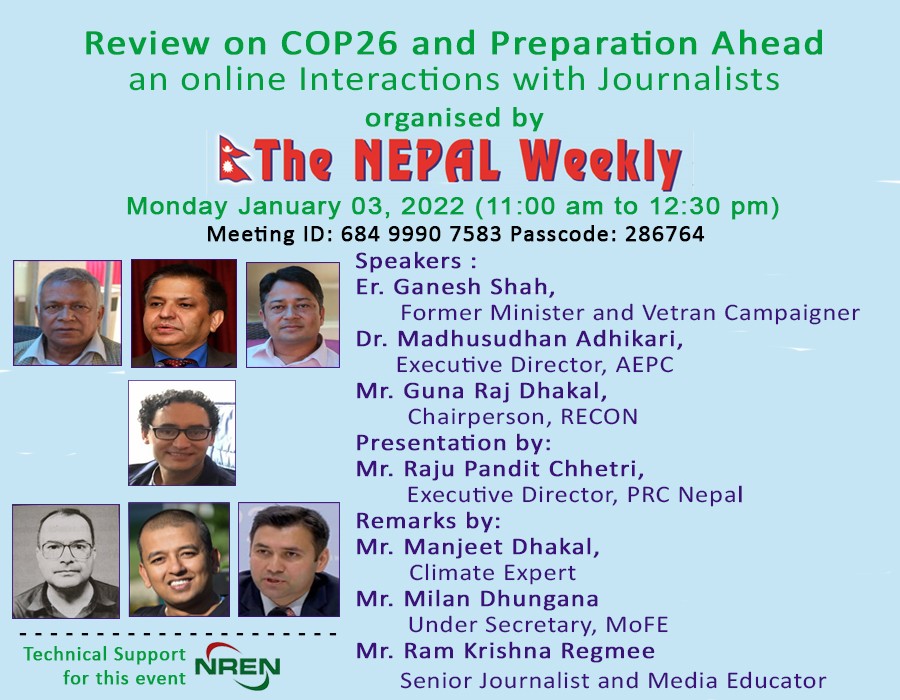 The Nepal Weekly
The Nepal Weekly  February 9, 2022
February 9, 2022The ice cap on the Mt. Everest, the highest mountain in the world, is thinning at an alarming rate and researchers have warned that the highest glacier located on the top of the Everest could disappear by the middle of this century, states a press release issued on Tuesday by ICIMOD (International Centre for Integrated Mountain Development) headquartered in Nepal. A recent article published in the Nature Portfolio journal reports that the ice on the Everest has been thinning at an alarming rate. “The research reveals that the Everest has been losing ice significantly since the late 1990s,” adds the press release.
The Everest Expedition, the single most comprehensive Scientific Expedition to Everest, conducted trailblazing research on glaciers and the alpine environment,” according to ICIMOD. “The multidisciplinary team comprised scientists from 8 countries including 17 from Nepal.” Three of the co-authors of the study were affiliated to the ICIMOD. It has been estimated that the ice in the South Cole glacier located at an elevation of 8020 metre is thinning at a rate of nearly 2 m per year, states the report. The findings were based on data from a 10 metre-long ice core obtained from South Col Glacier at an elevation of 8020 metre and meteorological observations from the two highest automatic weather stations in the world located on the southern slopes of Everest at 7945 and 8430 metre. The researchers have on the basis of radiocarbon dating, estimated the age of ice in the glacier to be 2,000 year old. The rate of ice loss measured is more than 80 times faster than the 2000 years it took to form this thickness of ice.

“The long-term effect on the availability and stability of these water towers which will impact downstream communities is of major concern,” says ICIMOD. Glaciers in the Himalayas make a significant contribution to water resources for millions of people. The research finding indicate that the change in ice cover in the Everest was triggered by climate change. Highest Everest glacier may disappear after 30 years The ice cap on the Mt. Everest, the highest mountain in the world, is thinning at an alarming rate and researchers have warned that the highest glacier located on the top of the Everest could disappear by the middle of this century, states a press release issued on Tuesday by ICIMOD (International Centre for Integrated Mountain Development) headquartered in Nepal. A recent article published in the Nature Portfolio journal reports that the ice on the Everest has been thinning at an alarming rate.
“The research reveals that the Everest has been losing ice significantly since the late 1990s,” adds the press release. The Everest Expedition, the single most comprehensive Scientific Expedition to Everest, conducted trailblazing research on glaciers and the alpine environment,” according to ICIMOD. “The multidisciplinary team comprised scientists from 8 countries including 17 from Nepal.” Three of the co-authors of the study were affiliated to the ICIMOD. It has been estimated that the ice in the South Cole glacier located at an elevation of 8020 metre is thinning at a rate of nearly 2 m per year, states the report. The findings were based on data from a 10 metre-long ice core obtained from South Col Glacier at an elevation of 8020 metre and meteorological observations from the two highest automatic weather stations in the world located on the southern slopes of Everest at 7945 and 8430 metre.

